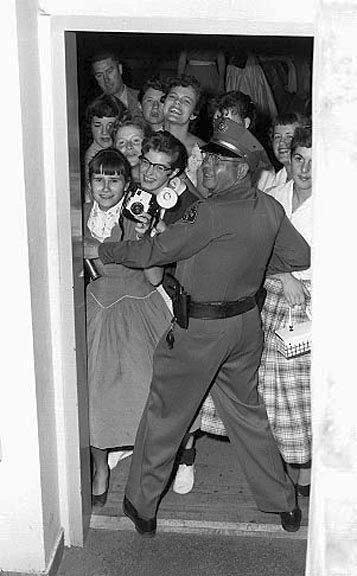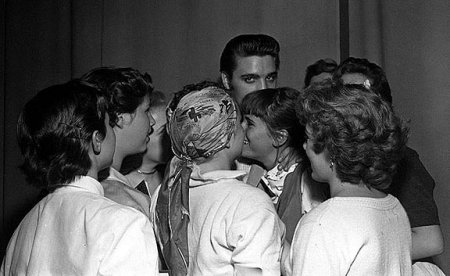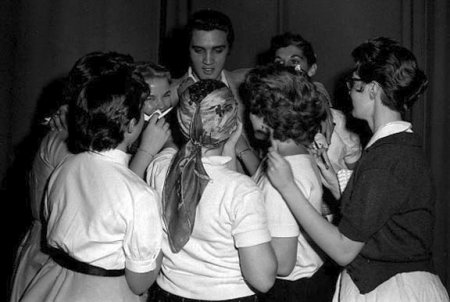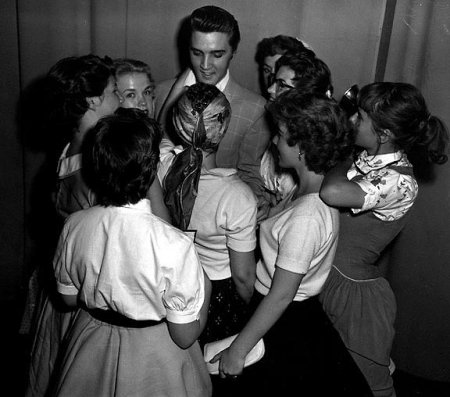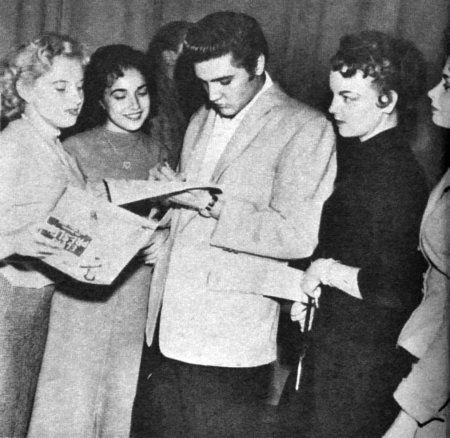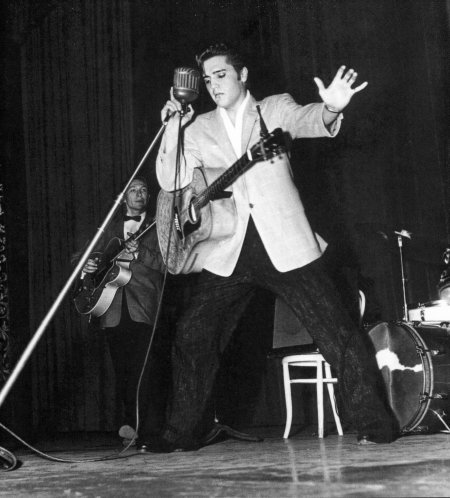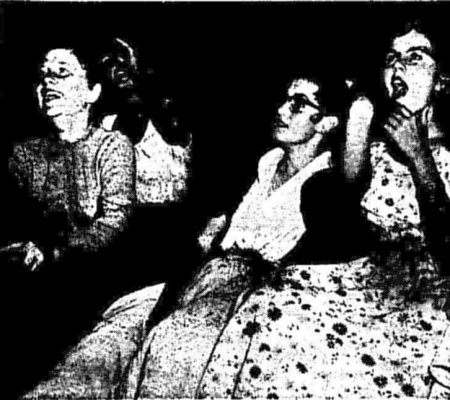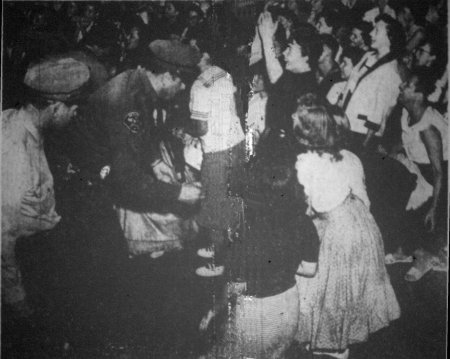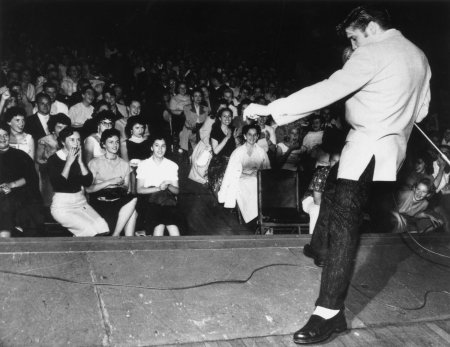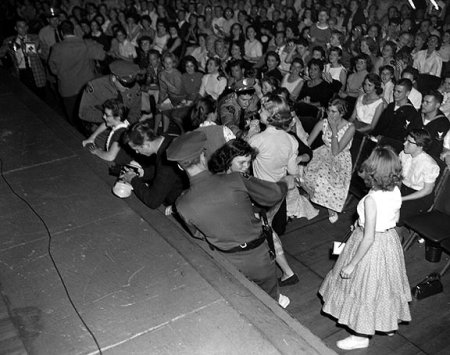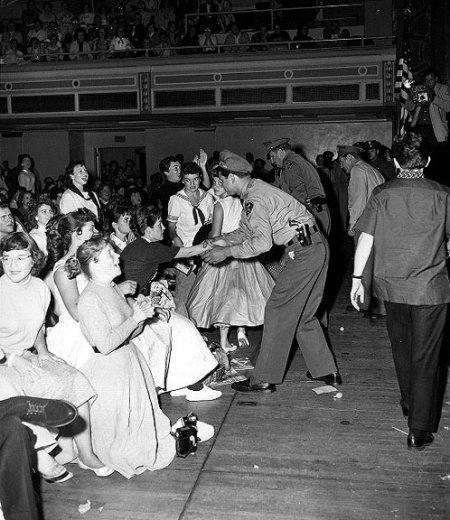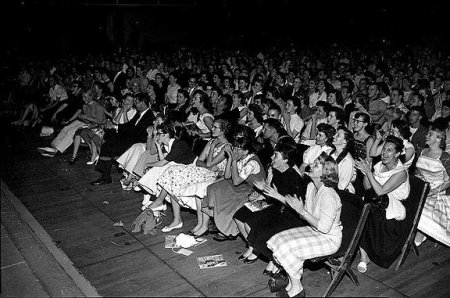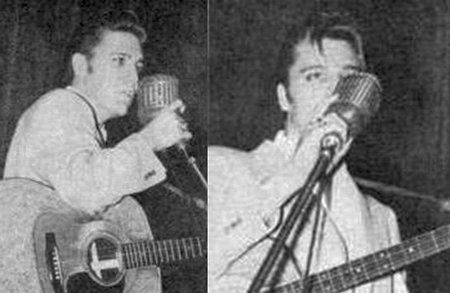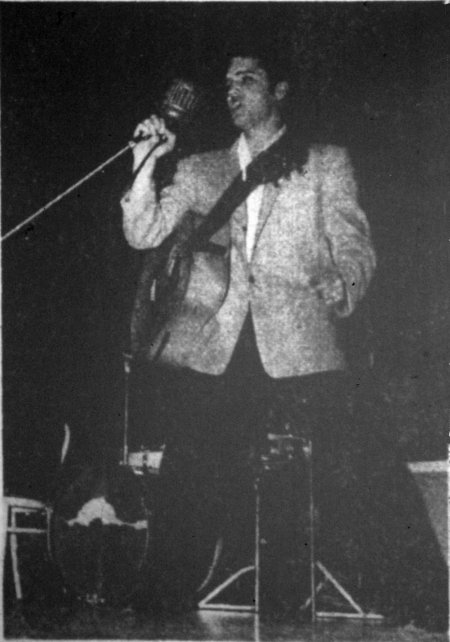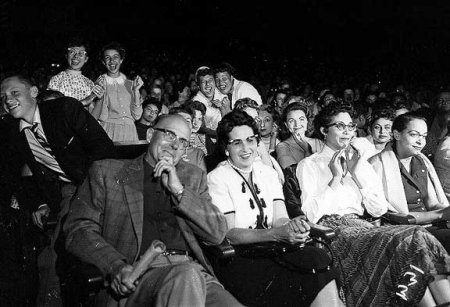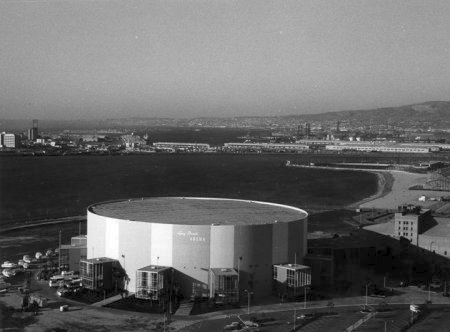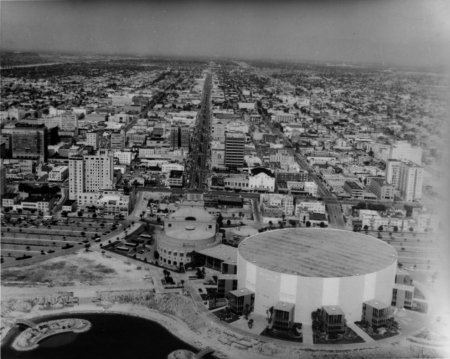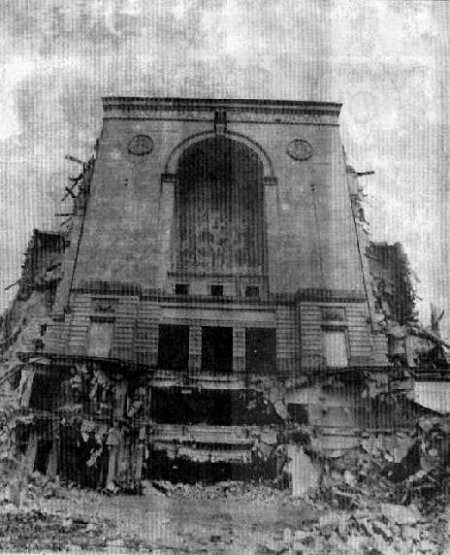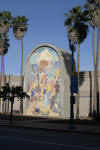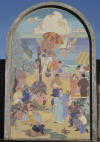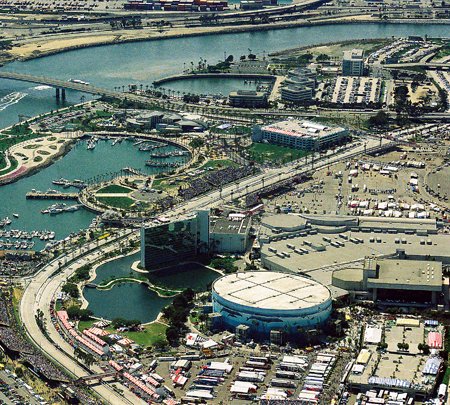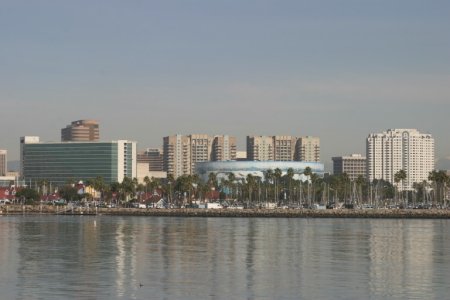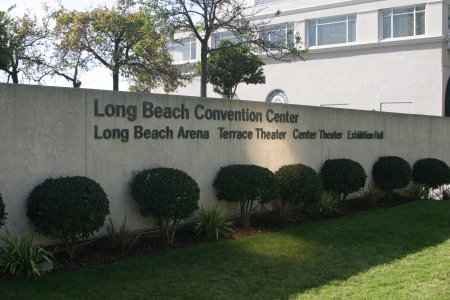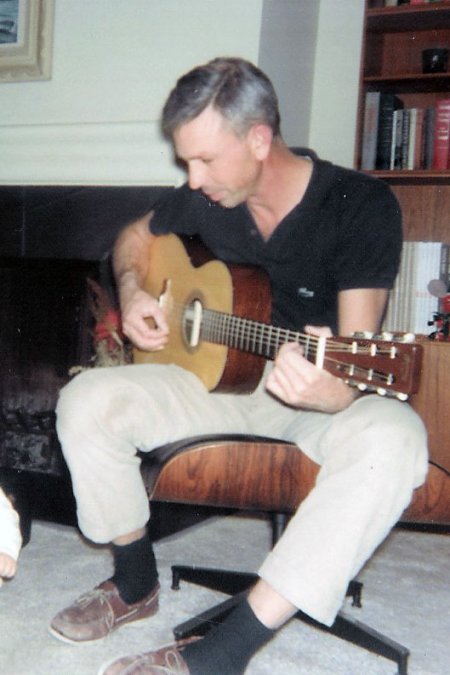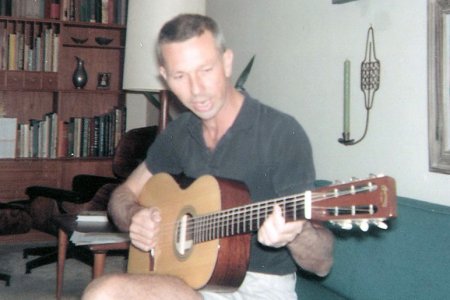 |
Municipal Auditorium
The Pike in Long Beach was a midway and amusement park along Seaside Way with a large roller coaster called the Jack Rabbit that opened in 1902. The municipal pier was located there at the end of Pine Avenue.
The first Municipal Auditorium was built there in 1905 at Seaside Way along the east side of the pier. It was a wooden-frame structure extending onto the beach on pillars that sat 6000. On May 24, 1913, during the "British Empire Day"
celebration, 10,000 people on the upper floor of a double-deck pier in
front of the Auditorium caused a section to collapse. 400 people fell
when those on the top deck fell upon the hundreds crowded on the lower
deck which fell to the beach forty feet below. A section of the
auditorium came down and added to the wreckage that fell of top of the
injured and the dead. Thirty-three, mostly women, were killed.1
The second Municipal Auditorium replaced the first one and was completed in 1932 from plans drawn by J. Harold McDowell. Located slightly east down Seaside Avenue from the original one past the Breakers Hotel, it was built on 20 acres of landfill that extended 500 feet into the Pacific Ocean at the south end of American Avenue (Long Beach Boulevard).
At the time the area was still open to the ocean and in order to protect the auditorium from storms and coastal erosion a half-circular shaped breakwater was constructed around it and named Rainbow Pier. It arched along side the municipal pier from Pine Avenue on the West end to Linden Avenue on the East surrounding the auditorium with a lagoon. The light poles on the pier were painted a variety of colors, making it a colorful area open to the public for walking or driving. In 1934 the Municipal Pier at Pine Avenue suffered storm damage and closed. Suggestions that the auditorium later be renamed Rainbow Auditorium were refused.
The Auditorium was actually constructed as two halls sharing a common stage, much like Ellis Auditorium in Memphis. The South side was a smaller semi circular concert hall with elevated seating and archways and bust statues encircling the walls, while the North side was the larger rectangular shaped auditorium. The larger auditorium with a large flat floor surround a multi-tired balcony was used for a multitude of functions; dances, recitals, stage shows, conventions, home and car shows etc... Total, it was said to seat 8000.
In 1937 forty artists working in Los Angeles under the direction of Stanton MacDonald-Wright and Albert Henry King from an original design by Henry Allen Nord cut and pieced together in sections one of the largest mosaics ever made depicting a beach scene of bathers, picnickers and horseshoe players. It was funded by the Federal Art Project, a division of the Works Progress Administration (W.P.A.). Completed in 1938, the artists designed their signatures into the border and the mosaic was placed, a section at a time, into the façade of the North side of the Long Beach Municipal Auditorium, arguably, the gateway to historic U.S. Route 6 (Long Beach Boulevard).2
At 26, Liberace started his first world tour with two concerts at the Memorial Auditorium, on February 17 and 18, 1947. Being so close in proximity to LA and Hollywood many stars attended, as they did for many performances by other entertainers. He arrived in Long Beach a week before his engagement and made daily appearances at Humphrey's Music Store, 130 Pine Ave. from 1:00 to 4:00 to autograph records where his $25,000 Bluthner concert grand piano was also on display. On the 12th, he performed a special show for 500 wounded veterans at the Long Beach Navy hospital at the auditorium.3
In 1926 the American Association of State Highway Officials (AASHO) adopted the U.S. numbering system for marking the Nation's main Interstate highways. Initially, U.S. Route 6 was a short route running between Provincetown on Cape Cod, Massachusetts, to Brewster, New York, extending it in stages over the years to transcontinental length. In 1937 AASHO approved the extension of U.S. Route 6 to Long Beach, California, ending at the Long Beach Traffic Circle at the east end of town. With a distance of 3,652 miles it was the longest U.S. Route in the country. However, in 1953 a movement was started to extend it to the water front and a bronze plaque was placed on the outside of the wall of the Memorial Auditorium which identified this location as the westerly end of U.S. Route 6.4
In 1955 Rainbow Pier was closed for six months for excessive dredging and fill operations in the lagoon. The pilings of the pier itself were deteriorating and only received minor repairs while closed. In the years that followed much of that waterfront area there would be redesigned and filled in.
On July 11, 1955, Judy Garland and her road show performed at the Municipal Auditorium in a benefit for the Long Beach Exceptional Children's Foundation. She had been nominated for an Academy Award for her starring role in 1954's remake of A Star is Born, her first film since leaving MGM in 1950 and it was considered her comeback. She was 33. Initially she had not planned on staging her show anywhere in the LA area but only did so when approached to do the benefit for the local foundation. It was a cause that she had always considered a pet project and was in the process of incorporating her own foundation for exceptional children.5
A star studded audience was in attendance and a platform was set up outside the auditorium for the stars as they arrived. Frank Sinatra had chartered a bus and loaded it with celebrities and stars arrived by the car load through a roped off section of American Avenue. Nearly 100 seats were purchased by celebrities such as Jimmy Stewart, Jack Warner, Ronald Reagan, David Niven, Gary Cooper, Lana Turner, Betty Grable, Jerry Lewis, Harry James, Edgar Bergen, Donald O'Connor, Art Linkletter and many others.5
The show netted at least $15,000 for the children. Judy's finale was "Somewhere over the Rainbow" followed by a standing ovation and four encores. She then asked the audience if they would like to meet some of her friends and brought up Frank Sinatra who then brought up Humphrey Bogart who brought up Lauren Bacall. Soon after they were joined by Debbie Reynolds, Eddie Fischer, Betty Hutton, Dick Powell, June Allyson, Sammy Davis Jr. Dean Martin and several others.5 Dean and Sammy performed a Martin and Lewis song with Sammy imitating Jerry. Frank had the show recorded and later gave copies to his friends that attended.
Judy played to a sold out, standing room only crowd, numbered at 4300 in the larger of the two halls which suggests that the said capacity of 8000 may be too high since the concert hall side sat less than 2000.
Less than a year later, on June 7, 1956, Elvis, Scotty, Bill and DJ made their only appearance together in Long Beach when they performed at the Municipal Auditorium. Coincidentally, Elvis would years later be approached for a starring role in the second remake of A Star is Born. Though they had performed in San Diego the previous April and the night before, both times following appearances on the Milton Berle show, this was their first live appearance in the Los Angeles area. The show was reviewed and advertised in both the Long Beach Independent, a morning paper, and the Press-Telegram and also covered by the the Los Angeles Examiner reporters and photographers.
The show was opened by the same troupe that had been touring regularly with them since their return from Las Vegas in May where they had first met Liberace. The show consisted of The Jordanaires, Irish tenor Frank Connors, the Flaim Brothers Orchestra, female singer Jackie Little and magician/comedian Phil Maraquin. Backstage Elvis met with several fans. Tickets sold for $1.50 for general seating and $2.00 for reserved and were available at Humphrey's Music Store on Pine Ave.
Ann (Keller) Conway was in attendance that evening and recollected, Hearing Elvis Presley sing at the LB Municipal Auditorium in 1956 when I was a very innocent 16 marked the beginning of what would become a lifelong love affair with rock n' roll and its power to move me---physically, emotionally, spiritually.6
I'd received a call out of the blue from my best friend. One of the guys she knew who had a car had three tickets--printed up with the name ''Alvis'' Presley---to Elvis' concert at the Municipal Auditorium, an icon in those days that spoke of glamour, mystery and elegance. I can still smell the huge, beckoning hall-----it had a saltiness about it, being close to the sea, and its spaciousness, height and cushiness were a big cut above the movie theaters we enjoyed at the time.6
I was called backstage at intermission to pose with Elvis for photographs. They sent scouts out to scour the audience; each picked several girls and we followed them backstage.6
He put his arm around me and picked up my hand and kissed it. My knees almost gave out. I didn’t wash my hand for days!!!! 6
I looked closely at this slender singer with his sensuous mouth and greased-up hair and I saw-----how could this be?---a cream-colored face pocked with acne scars. Suddenly, the perfection I'd conjured up about him as he sang switched to a disheartening reality. It would become a theme in my life: fantasies about men would always have their earthly price----the inevitable imperfections.6
When Elvis sang those words, I was suddenly catapulted into a thrilling, aching, stratosphere of longing that was brand new. Oh, I'd mooned over actors in movie magazines, but I'd never felt any thing like this. I could barely move. Or speak.6
From that day forward, I would never be the same---for I had this secret buried within me. Love isn't only about the heart. It can be deep within the body. Let's face it, Elvis and his caramel voice and undulating hips turned us all on------and for me, it was the very first time.6
Some of the girls called backstage at least, also appeared to have front row seats. The review the following day in the Independent read:
Unlike for Liberace and Judy Garland, no star studded audience was reported to have been there, though several would turn out for one of their last appearances in L.A. the following year at the Pan Pacific Auditorium. The following night they performed in L.A. at the Shrine Auditorium.
By 1962 the lagoon and vicinity had been land filled and the new round shaped Long Beach Arena was constructed and opened that year. The Arena which connected to the Auditorium essentially replaced it as the venue for large concerts and now also sporting events. Judy Garland died at 47, in 1969, the same year Elvis returned to performing live. Elvis would later perform in the Arena with the TCB band on November 14 & 15, 1972 and two shows on April 25th, 1976.
In 1974 the California Coastal Commission handed over the control of downtown and shoreline redevelopment to the City and much of the existing waterfront was reclaimed by landfill. The Municipal Auditorium was demolished in 1975 to make way for the Long Beach Convention & Entertainment Center which is made up of the Exhibition Hall, the Arena and the Performing Arts Center on the site of the Municipal Auditorium.
The bronze plaque that identified the end of U.S. Route 6 was moved to its current location at the Long Beach Performing Arts Center.4 The Pike operated until 1979. The mosaic that adorned the North wall of the Auditorium was saved from demolition in 1975 and moved to 3rd Street and the Promenade in 1982.2
In 1992 Marine Life Artist Wyland painted one of his murals along the exterior of the Arena, covering 116,000 square feet and depicting migratory gray whales and other aquatic life found in the waters off Long Beach. It was dedicated on July 9, 1992. In celebration of Earth Day in 2009, Wyland added a large mural of the earth on the roof.7
Today, like the Auditorium before it, the Performing Arts Center houses two halls, the Center and Terrace Theater, each facing the other front to back though they do not share a common stage.
Ann Conway would later become a society reporter for the Los Angeles Times (1986 - 2004) during which time she interviewed thousands of celebrities, some of which were Elizabeth Taylor, Bob Hope, Jennifer Jones, Kirk Douglas, Glenn Ford, Debbie Reynolds, Esther Williams, Sidney Poitier, and Robert Wagner. How could I have known when I read Modern Screen and Photoplay in the '50s that someday I would be interviewing and writing about the stars I'd worshipped from afar? Interviewing Lisa Marie Presley was a huge thrill, and yes, I told her about her dad and me at that concert in '56.6
page added February 13, 2011
1 according to
Long Beach, CA Double Pier Collapses - May 1913
Special thanks to Ann Conway and to Randy Lewis of the
LA. Times for their assistance with this page. Most of the
information regarding the history of the Pike and Municipal Auditoriums
in Long beach was obtained from the LA Public Library's and USC Digital
Library's sites. Last month we received an email from Patrick Wallace in San Clemente, CA who's father was one of the critics that reviewed Elvis' appearance in Long Beach in 1956. As it turned out, his critique was a bit critiqued also. With his permission and assistance I've reprinted it and a follow up here on the site to share with everyone: Hello James and Scotty, added February 27, 2013
|
||||||||
|
All photos on this site (that we didn't borrow) unless otherwise indicated are the property of either Scotty Moore or James V. Roy and unauthorized use or reproduction is prohibited. |


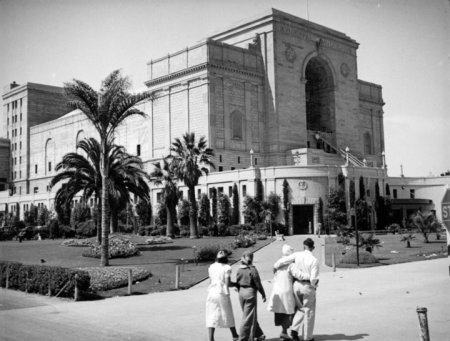


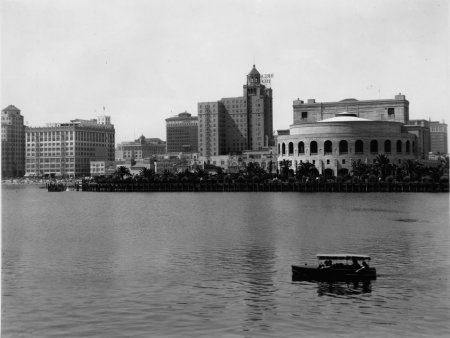
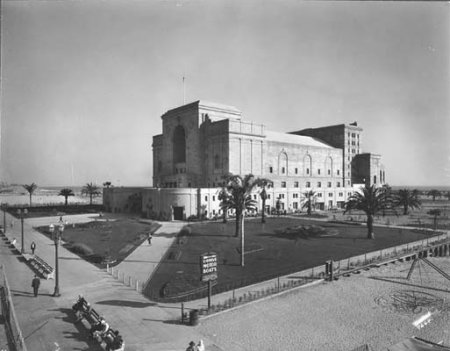
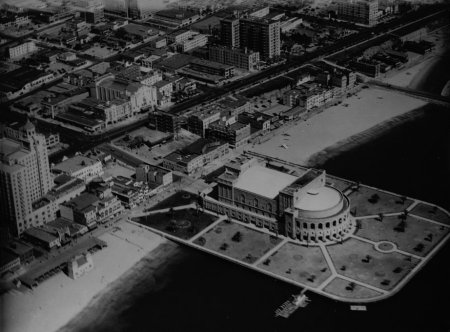
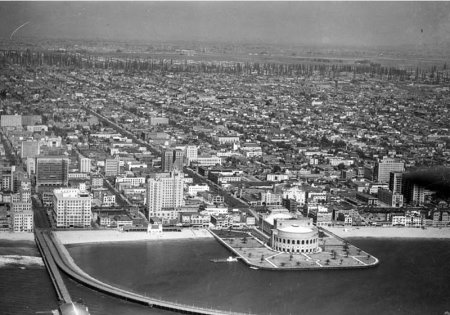
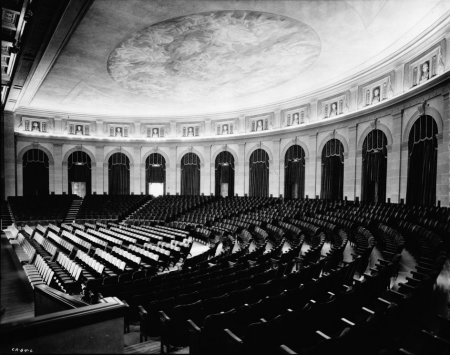
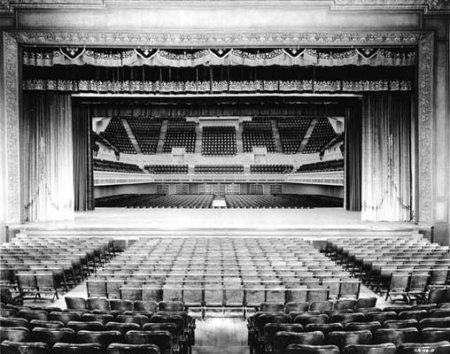
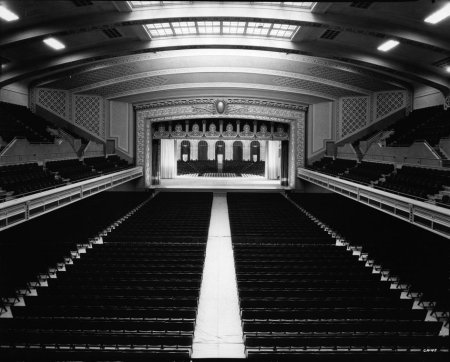
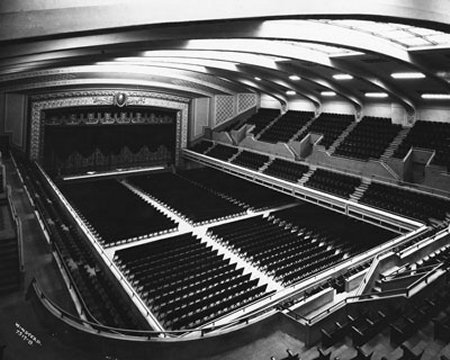


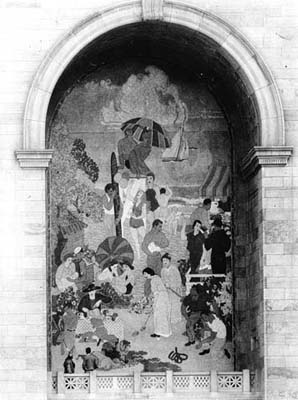
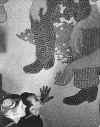
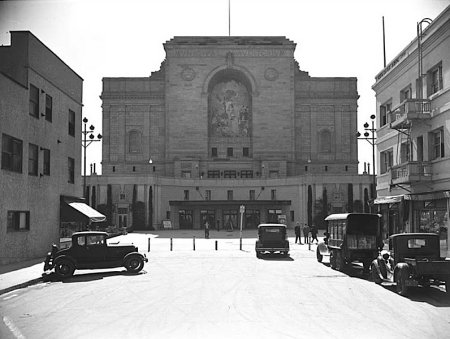

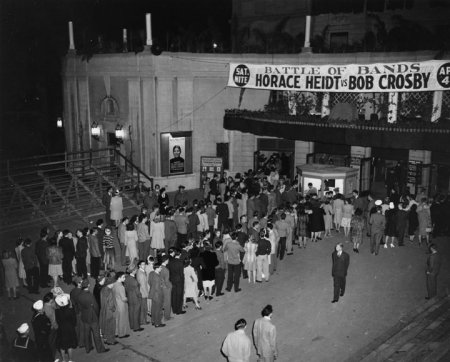
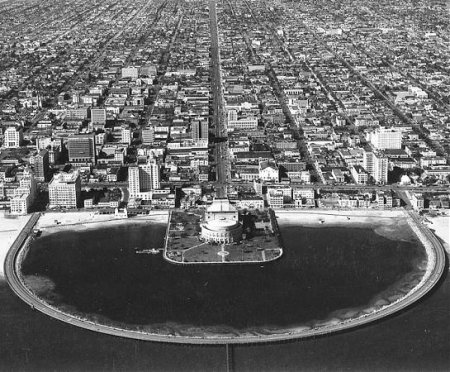
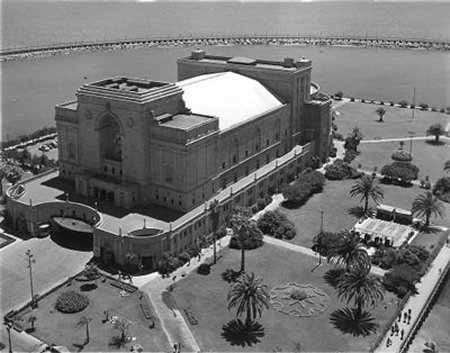
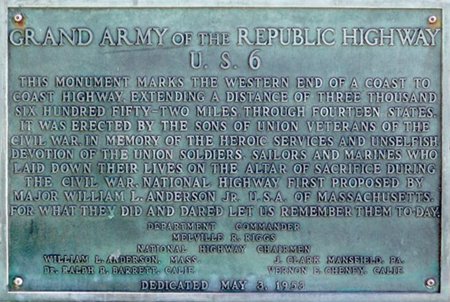
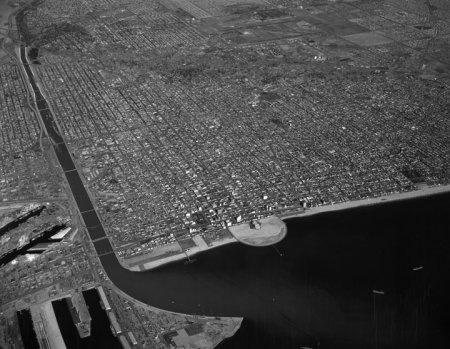
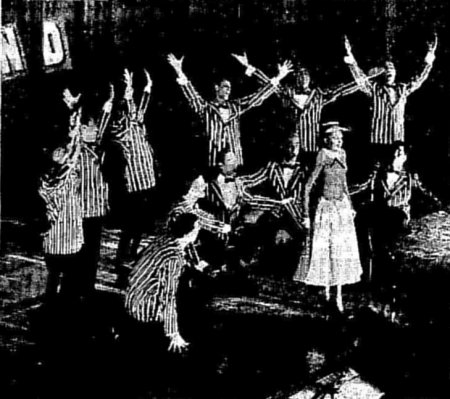
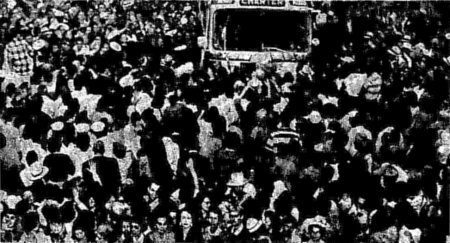
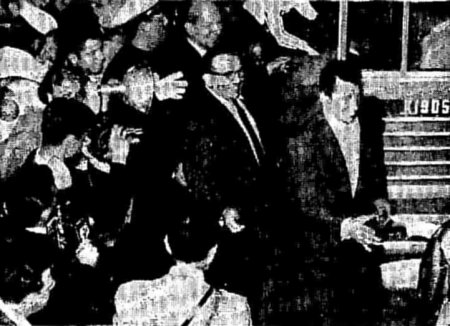
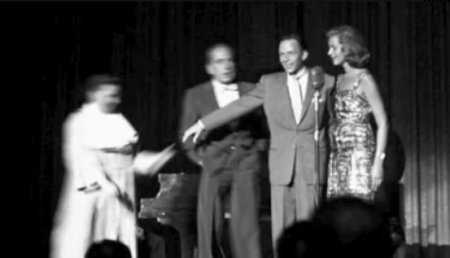

 Teenagers Will Hear Presley
Teenagers Will Hear Presley
